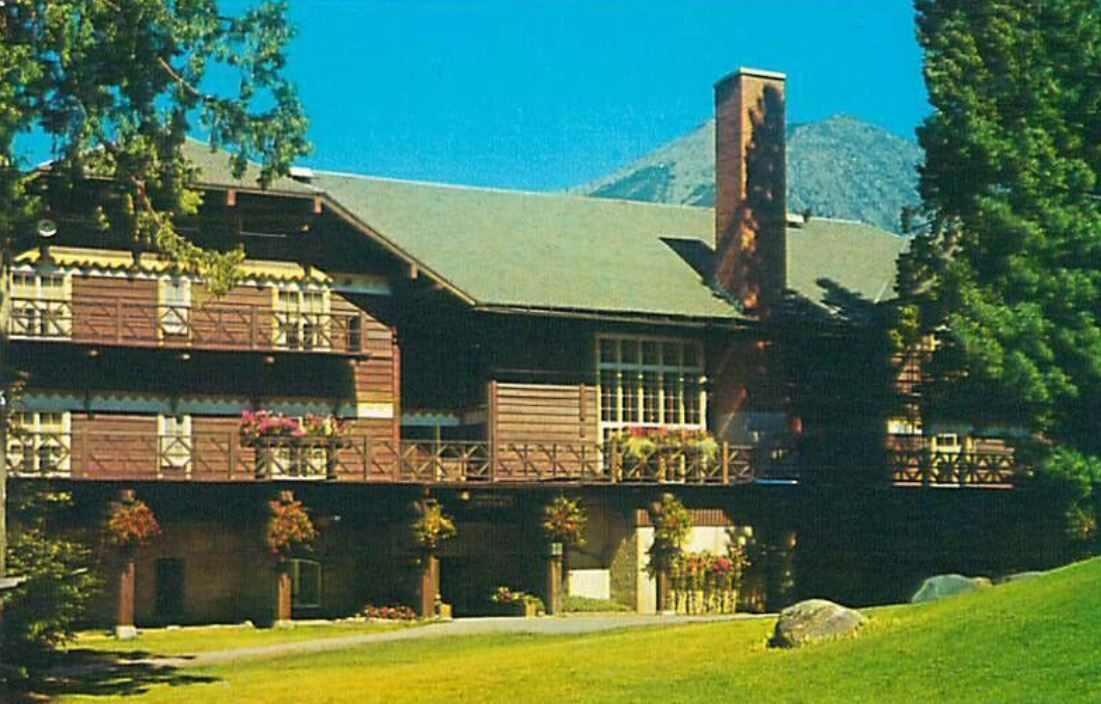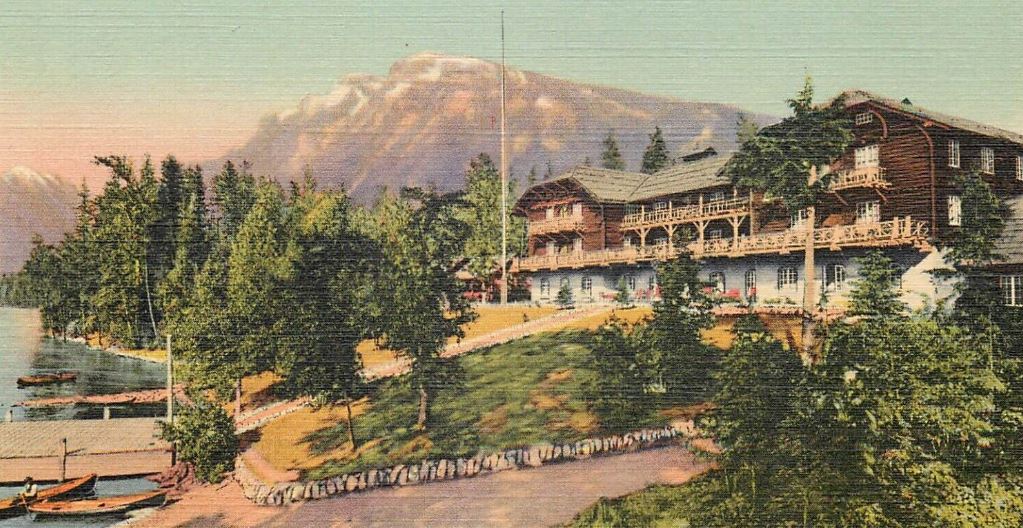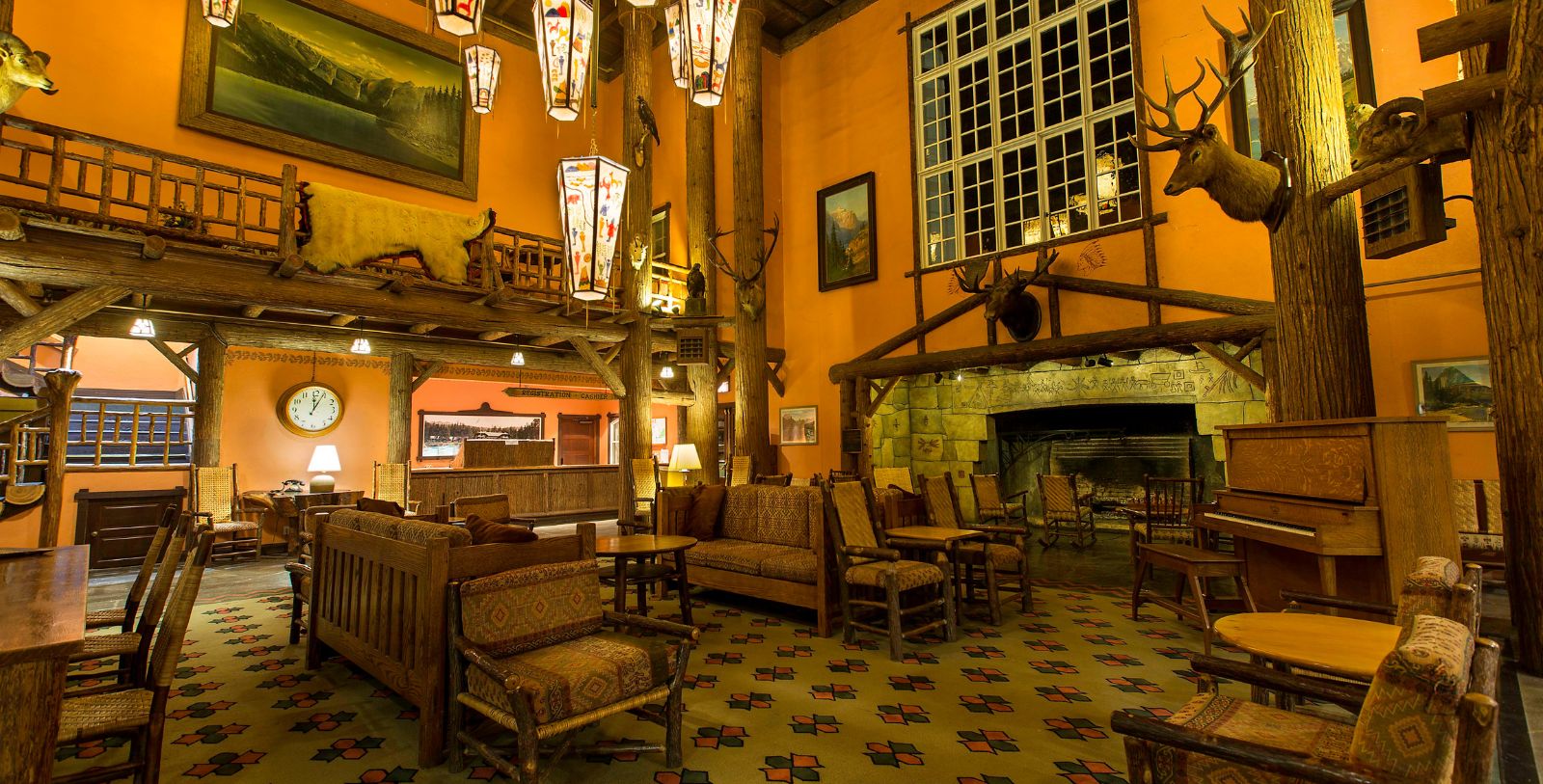Receive for Free - Discover & Explore eNewsletter monthly with advance notice of special offers, packages, and insider savings from 10% - 30% off Best Available Rates at selected hotels.
history
Discover the Lake McDonald Lodge, which once hosted the famous American painter Charles M. Russell.
Lake McDonald Lodge, a member of Historic Hotels of America since 2014, dates back to 1914.
VIEW TIMELINE
Glacier Park’s Historic Hotels: Lake McDonald Lodge
Learn about the history of Lake McDonald Lodge and its relationship to the greater Glacier National Park from the perspective of the park’s employee organization, the Glacier Park Foundation.
WATCH NOWA U.S. National Historic Landmark, Lake McDonald Lodge has been a member of Historic Hotels of America since 2014. Its history is also quite extensive, as it is deeply connected to the origins of Glacier National Park. After years of congressional debate, U.S. President William Howard Taft finally signed legislation that created Glacier National Park in 1910. The newly minted park quickly became one of the most popular destinations west of the Mississippi River, attracting thousands of cultural heritage travelers eager to explore its verdant alpine landscape. A number of hotels soon opened inside the park that catered to those overnight tourists. In fact, most of the buildings had been developed at the behest of the Great Northern Railway, which was then the main concessioner for Glacier National Park. (The railway itself had created the hotels as a means of generating more passenger traffic along a spur of its line that traversed near the park at the Marias Pass.) However, the company did not possess all of the hostelries. On the contrary, a few aspiring entrepreneurs eventually decided to open their own hotels, too. Among the adventurous businesspeople to construct an independent hotel was a land speculator named John E. Lewis. Sensing great economic opportunity, Lewis began planning to make a hotel that was far more luxurious than anything the Great Northern Railway had built to date. Lewis subsequently selected a serene spot along the shores of Lake McDonald, which had been the site of an earlier Gilded-Age business called the “Snyder Hotel.”
Lewis then partnered with architect Kirtland Kelsey Cutter to construct a magnificent three-and-one-half-story structure that brilliantly captured the region’s bucolic environment. The work was incredibly arduous, taking months of non-stop labor to complete. In fact, the construction crews had to work straight through the winter in the face of snowstorms and bitter coldness. Nevertheless, the hotel that the team created was nothing short of magnificent. Lewis, Cutter, and their colleagues specifically raised the building’s soon-to-be-iconic façade with a combination of gorgeous wood paneling and cut stone. Inside, the floorplan centered on a spacious main lobby, which featured a wealth of impressive detailing like multistory balconies and carved log posts. Dozens of brilliant guestrooms spiraled off into their own wings, featuring numerous upscale amenities and décor. Welcoming phrases spelled in local Native American dialects were even carved into the woodwork, helping to convey a sense of continuity to the area’s greater heritage. Nearly all the motifs had ultimately united to make the building resemble a gorgeous Swiss Chalet, which Lewis believed captured the rustic ambiance of the surrounding wilderness. (It was also the style that his competitors had instituted for their hotels scattered about throughout the park.)
When the project thus concluded on the eve of World War I, the new hotel became immensely popular due to its stunning appearance and amazing services. In fact, the structure—originally known as the “Lewis Glacier Hotel”—quickly developed a reputation as the most luxurious place to stay in all Glacier National Park. Many illustrious guests eventually began to visit regularly, including noted authors Mary Roberts Reinhart and Irvin S. Cobb. Perhaps the greatest person to come was legendary artist Charles M. Russell, who often painted picturesque landscapes of Glacier National Park during his frequent trips to the hotel. The Lewis Glacier Hotel maintained its fame for years, even after the Great Northern Railway obtained the rights to operate the business on behalf of the National Park Service at the start of the Great Depression. The transference saw the Lewis Glacier Hotel gradually reborn following a series of extensive renovations that concluded during the mid-1930s. (The construction specifically installed many new outstanding accommodations onto the structure by way of massive wings fixed onto the second and third stories.) Later renamed as the “Lake McDonald Lodge” in 1957, the hotel has since remained one of the best locations to visit while exploring Glacier National Park. Generations of cultural heritage travelers have continued to find the building’s storied identity and spectacular setting irresistible. Few places are truly better to experience the wonders of Glacier National Park then this fantastic historic hotel.
-
About the Location +
For millennia, the area that now constitutes the historic Glacier National Park was inhabited by many tribes of Native Americans. While the location served as the home for different people periodically, only the ancestors of a few tribes—notably the Blackfeet and the Flathead—still live nearby today. (Both the Blackfeet and the Flathead began residing in reservations that directly bordered the park in 1855, with the Blackfeet living to the park’s eastern border and the Flathead staying to the west.) Nevertheless, the park remained free from largescale human settlement, which preserved its gorgeous landscape and fascinating ecosystem. Efforts to federally protect the region started emerging in the latter half of the 19th century, especially once industrialization began materializing across much of the western United States. Respected naturalist George Bird Grinnell spearheaded the campaign to safeguard the region’s natural beauty, specifically lobbying the U.S. Congress to pass laws that could protect it. After spending years petitioning Congress, Grinnell received much needed help from Louis W. Hill, president of the Great Northern Railway. In 1891, Hill’s company had led a portion of its rail network through Marias Pass nearby, which split the Continental Divide just south of today’s park boundaries. Recognizing the area’s inherent magnificence and potential for tourism, Hill then joined Grinnell in pushing for the region’s public conservation. As such, Congress eventually turned thousands of acres into an official federal forest preserve in 1897.
However, the designation did not fully conserve the local geography, as commercial mining and lumber operations were allowed to maintain their local leases. Grinnell and Hill therefore increased their attempts to save the site, hoping to ultimately transform it into a national park. To help win their fight, the two men formed a powerful alliance with the Boone and Crockett Club—an incredibly influential wildlife conservation group that President Theodore Roosevelt had founded several years prior in 1887. Their combined advocacy finally convinced Congress to pass legislation that made the area a national park, which President William Howard Taft then signed into law right before World War I. The bill specifically gave the region the name “Glacier National Park” after the ancient glaciers that resided throughout the mountainous landscape. Glacier National Park quickly then became one of the most popular natural landmarks in the whole country, with many tourists visiting via the Great Northern Railway. The railway itself had also become the official concessioner for the park, prompting Hill and his contemporaries to find ways to host the throngs of guests now arriving in their train cars. Hill subsequently commissioned the construction of numerous hostelries that resembled Swiss Chalets as part of a grander marketing strategy that presented the region as America’s “Switzerland.” (While Lake McDonald Lodge originally opened around the same time and displayed the same architecture, it was not built by Hill’s team.)
In 1916, Glacier National Park fell under the authority of the National Park Service. Charged with managing all of the country’s national parks, the agency sought to further conserve Glacier National Park’s wonderful landscape and enhance its accessibility. To that end, the National Park Service started developing an 53-mile long road that navigated deep into the park. Completed during the Great Depression, the Going-to-the-Sun Road dramatically increased the ability of tourists to experience the majesty of Glacier National Park. The National Park Service oversaw additional construction projects that further improved guest access throughout the 1930s and 1940s, with much of the work done through the Civilian Conservation Corps. Today, the National Park Service continues to promote and protect the serene environment of Glacier National Park. Indeed, millions of people arrive every year to explore the park’s current 1,500 square miles of verdant forest, turquoise lakes, and towering mountain tops. Contemporary travelers also remain mesmerized by the countless species of plants and animals that live within its borders, including wolverines, bald eagles, and Canadian lynxes. Perhaps the greatest attraction on-site are the 25 prehistoric glaciers that remain active in the park. Due to its wonderfully conserved geography and ecosystem, Glacier National Park even bears a venerable distinction as a UNESCO World Heritage Site. (It specifically shares this title alongside the neighboring Waterton Lakes National Park, which is located right across the border in Canada.)
-
About the Architecture +
When John Lewis began renovating the Lake McDonald Lodge, he decided to use Swiss Chalet Revival style architecture as the source of his inspiration. Swiss chalets themselves were once rustic cottages that first emerged as seasonal farmhouses around the height of the Middle Ages. Indeed, the Swiss chalet was a refuge for cattle herders, who would bring their livestock up the mountain ranges during the warmer months. The house functioned as a secondary home, within which the farmers would create a variety of dairy products for trade. But the chalets lost their original purpose as time passed, gradually turning into quaint holiday homes instead. The main reason behind the transformation was the emergence of the Swiss Alps as a popular tourist destination in the 19th century, specifically among the British and the French. They eventually discovered the many chalets scattered around the country and began buying them up in great numbers. The foreigners subsequently renovated the chalets to reflect their romanticized views of alpine life in Switzerland. Soon enough, the new iteration of the chalet had swept across the region. Many natives went as far as to alter their own homes to resemble the aesthetic, essentially making the architecture “Swiss” in the process. Many largescale commercial buildings in Switzerland eventually featured the style, too, including restaurants, storefronts, and hotels. Architects from across Europe soon replicated the architectural form in their own work, with even a few Americans—like Kirtland Kelsey Cutter—using the design regularly. The chalets and their spinoffs were typically very beautiful, despite the rusticity of their layout. Set upon a rectangular foundation, the buildings were most easily recognized for their widely gabled roofs and facades of carved details and wooden balconies. Other iconic features included exposed construction beams, large windows, and weatherboarding.
-
Famous Historic Guests +
Mary Roberts Reinhart, author known for writing such publications like The Circular Staircase.
Irvin S. Cobb, humorist known for his work writing for Joseph Pulitzer’s New York World.
Charles M. Russell, a nature enthusiast and artist known for his landscape paintings that captured America’s “Old West.”
Tom Selleck, actor best known for his role in the television series Magnum, P.I.
Johnny Cash, country music musician known for such singles like “I Walk the Line,” “Ring of Fire,” “Get Rhythm, and the “Folsom Prison Blues.”
George H.W. Bush, 41st President of the United States (1989 – 1993)































